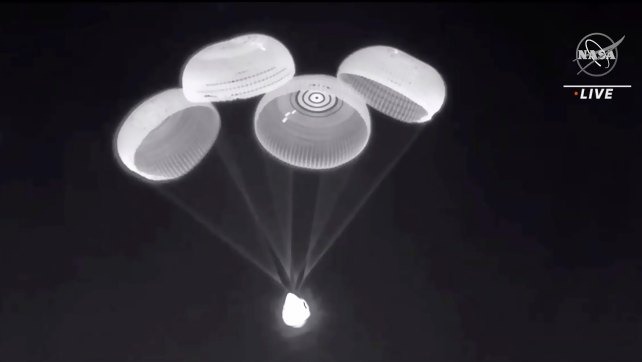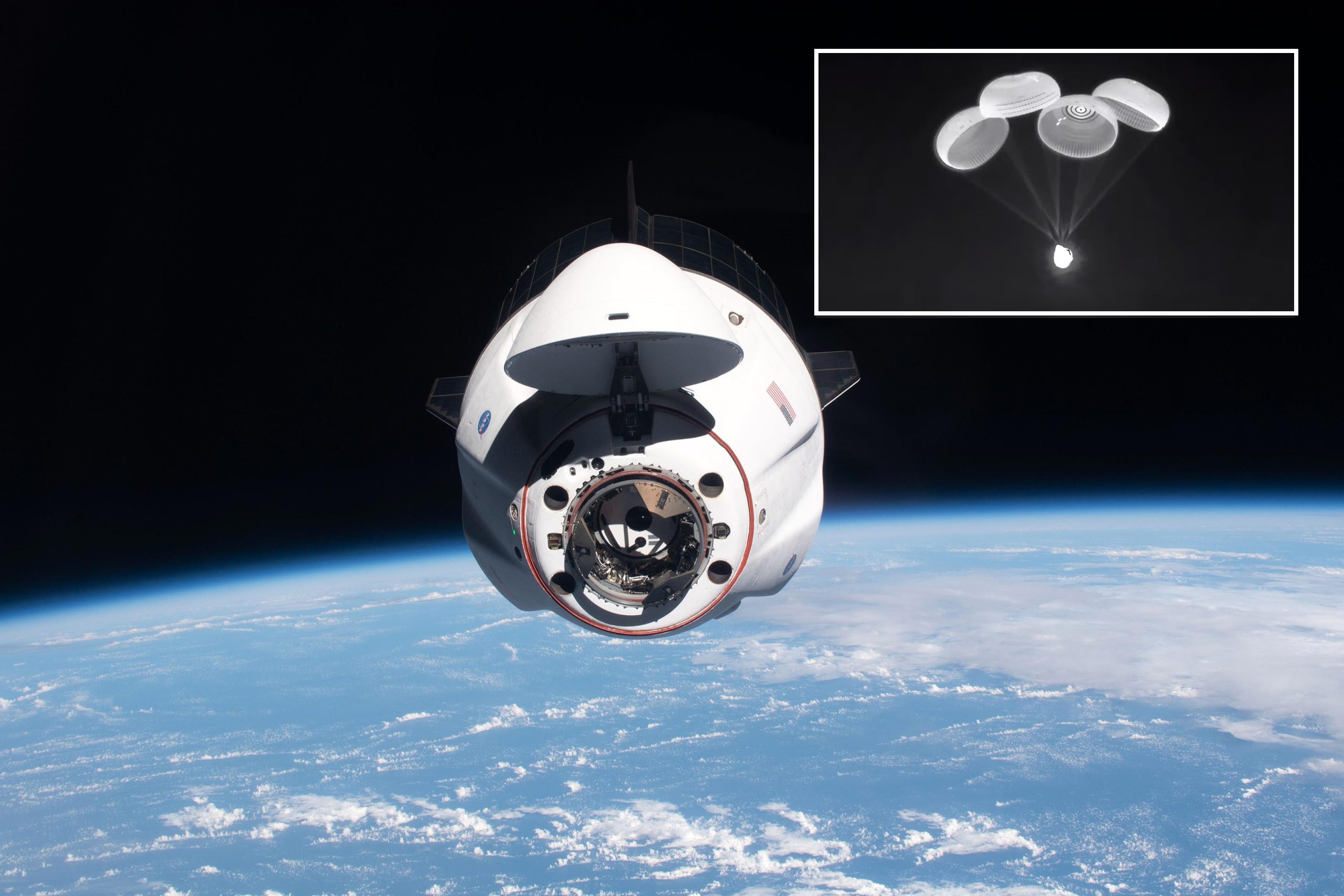After a record-breaking six-month NASA scientific mission on the International Space Station, four astronauts came home safely on Monday, splashing down in the Gulf of Mexico with their SpaceX Crew Dragon spacecraft after a day-long trip home from Cape Canaveral.
On Monday night (0330 GMT Tuesday), the Dragon spacecraft, called Endeavour, successfully parachuted into the Atlantic Ocean off the coast of Florida as planned, after a re-entry fall through Earth’s atmosphere that was broadcast live on NASA’s website.
Minutes before splashdown, real-time infrared thermal video footage got a sight of the capsule shooting across the night sky above the Gulf like a meteor through the night sky.
The flight control centre erupted in applause as the four main parachutes inflated above the capsule, which was observed floating down toward the Gulf surface and slowing to around 15 miles per hour (24 kilometres per hour) before landing softly into the placid water below.

After a successful splashdown was verified, a voice from the SpaceX flight control centre in suburban Los Angeles could be heard telling the crew, “Welcome home to planet Earth,” in a voice that was heard over the radio.
It was one of the astronauts who responded via radio, saying, “It’s nice to be back.”
According to Kathy Lueders, assistant NASA head for space operations, the return brought the mission’s total time in orbit to 199 complete days, the longest ever for an entire U.S.-launched crew. According to her, it broke the previous record of 168 days established by the predecessor SpaceX-NASA mission earlier this year, which had been set by the prior SpaceX-NASA mission
With less than an hour after splashdown, the spacecraft was raised from the water to the deck of a rescue ship, and the four astronauts could be seen descending one at a time from the hatch of Endeavour.
Pilot Megan McArthur (50) and mission commander Shane Kimbrough (54), both NASA astronauts, were the first to exit the spacecraft after it was launched. Their Japanese co-pilot, Akihiko Hoshide, and fellow mission expert Thomas Pesquet, 43, a French engineer from the European Space Agency, were the next to arrive on board the spacecraft.
Every one of them smiled and waved as they were hoisted onto waiting gurneys. They were unable to hold their own weight immediately after months in microgravity, so they waved a V-for-victory sign. It was planned that they will be brought to shore by helicopter after undergoing quick medical examinations.
RE-ENTRY CAN BE DIFFICULT.

After a 90-minute fly-around of the space station, the spacecraft started its eight-hour return journey earlier in the day, during which the astronauts took a series of survey images of the orbiting outpost, which is around 250 miles (400 kilometres) above the Earth.
It then continued to perform a series of manoeuvres throughout the day in order to bring itself even closer to Earth in preparation for its final night-time touchdown.
The capsule re-entered the atmosphere at about 17,000 miles per hour (27,359 kilometres per hour) after one last activation of its front rocket engines for a “de-orbit burn,” resulting in a free-fall onto the ocean below for several minutes during which crew connections were lost.
Because of the intense friction caused as the capsule dropped through the atmosphere, it was able to slow its fall while also raising temperatures around the exterior of the spacecraft to 3,500 degrees Fahrenheit (1,927 degrees Celsius). There is a shield covering the bottom of the capsule, which helps to absorb the heat and keep the spaceship from exploding.

They were sent into space on April 23 by a SpaceX Falcon 9 rocket, which took off from the Kennedy Space Center in Florida and took them to their destination in orbit.
SpaceX, a rocket business created in 2002 by billionaire entrepreneur Elon Musk, who is also the founder of electric car manufacturer Tesla Inc., sent the third crew to the space station as part of NASA’s budding public-private collaboration with the space station.

The returning crew has been dubbed “Crew 2” because it is the second “operational” crew that NASA has flown on a SpaceX capsule since restarting human space flights from American soil last year, after a nine-year break following the end of the United States space shuttle programme.
The replacement crew, known as “Crew 3,” was initially scheduled to launch to the space station at the end of October, but the launch has been delayed due to weather conditions and an unidentified medical concern affecting one of the four crew members.

